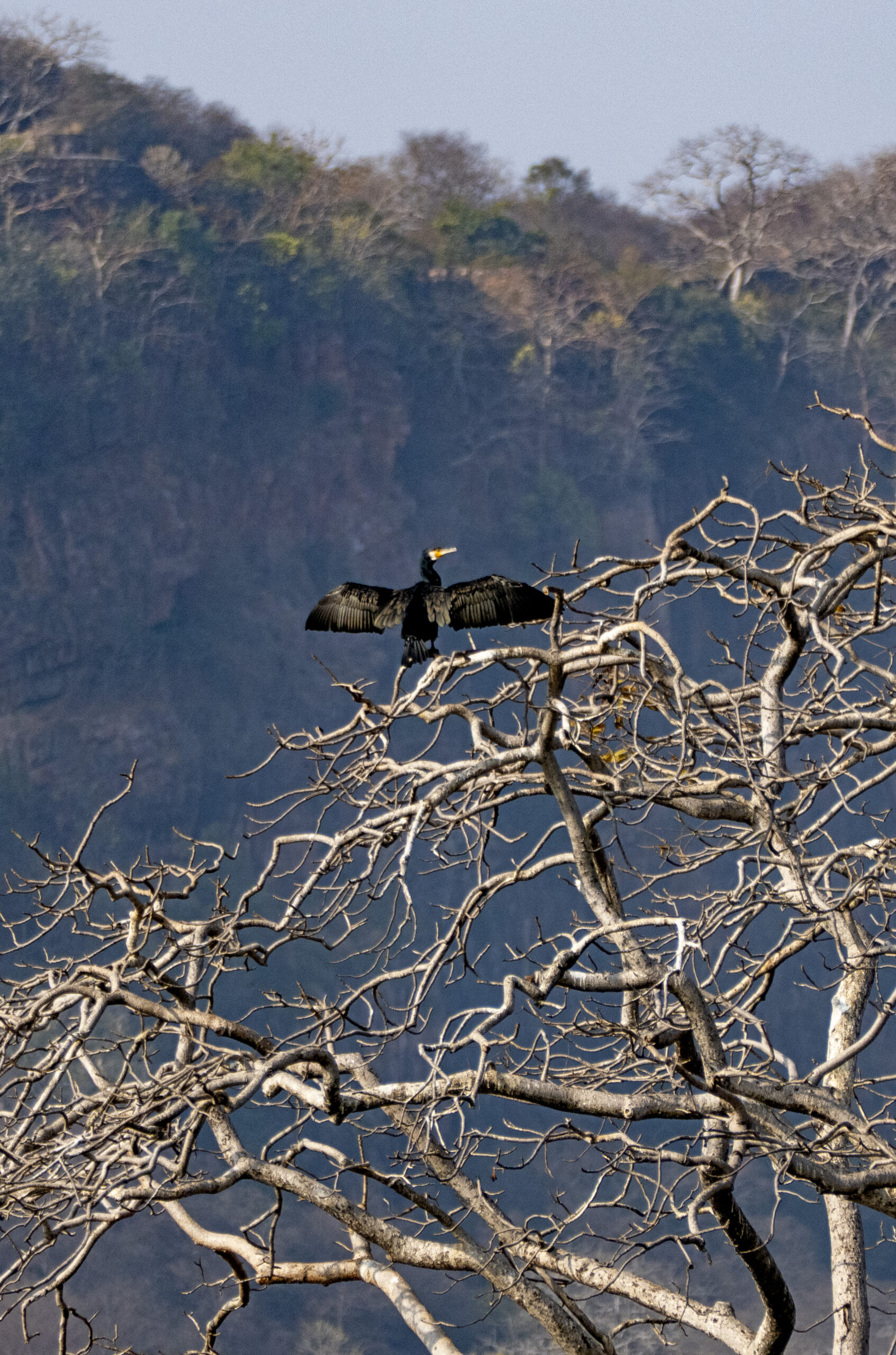As an avid birdwatcher, I’ve had the privilege of exploring some of the most breathtaking bird species found in India. From the lush green forests of the Western Ghats to the arid landscapes of Rajasthan, India is home to a wide range of bird species that are both fascinating and beautiful. In this article, I will be introducing you to the charm of Indian bird species, starting with the Yellow-eyed Babbler.
Introduction to Indian bird species
India is a country that is rich in biodiversity, and bird species are no exception. With over 1300 species of birds, India is a birdwatcher’s paradise. The country is home to a wide range of bird species, from the majestic Indian Peafowl to the tiny Purple-rumped Sunbird. Some of the most popular bird species found in India include the Indian Roller, the Black Drongo, and the Asian Koel.
Bird watching in India is a popular activity, as the country offers a diverse range of habitats that are home to different bird species. From the wetlands of Bharatpur to the forests of the Western Ghats, birdwatchers can explore a variety of habitats to spot different bird species.
The Yellow-eyed Babbler: Habitat, Physical Characteristics, and Behavior
The Yellow-eyed Babbler, also known as the Chrysomma sinense, is a bird species that is found in the Indian subcontinent. The bird is known for its striking yellow eyes, which stand out against its brown and grey plumage. The Yellow-eyed Babbler is a small bird, measuring around 15 cm in length, and weighing around 20-25 grams.
The bird is found in a variety of habitats, including scrublands, grasslands, and forests. The Yellow-eyed Babbler is a social bird species and is often found in small groups of 6-8 birds. The bird is known for its loud and melodious calls, which can be heard from a distance.
The Yellow-eyed Babbler feeds on insects and small invertebrates that it finds on the ground. The bird is known for its agile movements, which allow it to quickly catch its prey. The bird is also known to forage in groups, with each bird taking turns to search for food.
Other Fascinating Bird Species Found in India
Aside from the Yellow-eyed Babbler, India is home to a wide range of bird species that are both fascinating and beautiful. In this section, I will be introducing you to some of the most interesting bird species found in India.
Oriental Darter: Habitat, Physical Characteristics, and Behavior
The Oriental Darter, also known as the Anhinga melanogaster, is a bird species that is found in the wetlands of India. The bird is known for its long neck, which it uses to spear fish underwater. The Oriental Darter has a distinctive black and white plumage, with a long and pointed beak.
The bird is found in a variety of wetland habitats, including lakes, rivers, and marshes. The Oriental Darter is a solitary bird species and is often seen perched on branches overhanging the water. The bird is known for its silent flight, which allows it to sneak up on its prey.
Chestnut-bellied Nuthatch: Habitat, Physical Characteristics, and Behavior
The Chestnut-bellied Nuthatch, also known as the Sitta castanea, is a bird species that is found in the forests of India. The bird is known for its distinctive chestnut-colored belly, which contrasts with its blue-grey plumage. The Chestnut-bellied Nuthatch has a short and straight beak, which it uses to probe tree bark for insects.
The bird is found in a variety of forest habitats, including deciduous forests and coniferous forests. The Chestnut-bellied Nuthatch is a social bird species and is often seen in small groups. The bird is known for its acrobatic movements, which allow it to move up and down tree trunks with ease.
Great Thicknee: Habitat, Physical Characteristics, and Behavior
The Great Thicknee, also known as the Esacus recurvirostris, is a bird species that is found in the wetlands of India. The bird is known for its distinctive long legs and curved bill. The Great Thicknee has a mottled brown and white plumage, which allows it to blend into its surroundings.
The bird is found in a variety of wetland habitats, including marshes, swamps, and mangroves. The Great Thicknee is a solitary bird species and is often seen standing motionless in shallow water. The bird is known for its distinctive calls, which can be heard from a distance.
Tawny-bellied Babbler: Habitat, Physical Characteristics, and Behavior
The Tawny-bellied Babbler, also known as the Dumetia hyperythra, is a bird species that is found in the scrublands of India. The bird is known for its distinctive tawny-colored belly and brown plumage. The Tawny-bellied Babbler has a curved beak, which it uses to search for insects in the undergrowth.
The bird is found in a variety of scrubland habitats, including dry scrublands and thorn forests. The Tawny-bellied Babbler is a social bird species and is often seen in small groups. The bird is known for its melodious calls, which can be heard from a distance.
Common-hawk Cuckoo and Indian Cuckoo: Habitat, Physical Characteristics, and Behavior
The Common-hawk Cuckoo, also known as the Hierococcyx varius, and the Indian Cuckoo, also known as the Cuculus micropterus, are both bird species that are found in the forests of India. The Common-hawk Cuckoo is a large bird species, measuring around 40 cm in length, while the Indian Cuckoo is a smaller bird species, measuring around 30 cm in length.
Both bird species have a distinctive plumage, with the Common-hawk Cuckoo having a brown and white plumage, and the Indian Cuckoo having a grey and white plumage. Both bird species are known for their distinctive calls, which can be heard from a distance.
Eurasian Coot and Black-winged Stilt: Habitat, Physical Characteristics, and Behavior
The Eurasian Coot, also known as the Fulica atra, and the Black-winged Stilt, also known as the Himantopus himantopus, are both bird species that are found in the wetlands of India. The Eurasian Coot is a medium-sized bird species, measuring around 35 cm in length, while the Black-winged Stilt is a larger bird species, measuring around 40 cm in length.
Both bird species have a distinctive plumage, with the Eurasian Coot having a black plumage and a white beak, and the Black-winged Stilt having a black and white plumage, with long pink legs. Both bird species are known for their distinctive calls, which can be heard from a distance.
Black-Hooded Oriole and Purple Sunbird: Habitat, Physical Characteristics, and Behavior
The Black-Hooded Oriole, also known as the Oriolus xanthornus, and the Purple Sunbird, also known as the Cinnyris asiaticus, are both bird species that are found in the forests of India. The Black-Hooded Oriole is a medium-sized bird species, measuring around 25 cm in length, while the Purple Sunbird is a smaller bird species, measuring around 10 cm in length.
Both bird species have a distinctive plumage, with the Black-Hooded Oriole having a black and yellow plumage, and the Purple Sunbird having a purple and green plumage. Both bird species are known for their melodious calls, which can be heard from a distance.
Grey-bellied Cuckoo and Rudy Shelduck: Habitat, Physical Characteristics, and Behavior
The Grey-bellied Cuckoo, also known as the Cacomantis passerinus, and the Rudy Shelduck, also known as the Tadorna ferruginea, are both bird species that are found in the wetlands of India. The Grey-bellied Cuckoo is a small bird species, measuring around 20 cm in length, while the Rudy Shelduck is a larger bird species, measuring around 65 cm in length.
Both bird species have a distinctive plumage, with the Grey-bellied Cuckoo having a grey and brown plumage, and the Rudy Shelduck having a rusty orange plumage. Both bird species are known for their distinctive calls, which can be heard from a distance.
Painted Spurfowl and White-throated Woodpecker: Habitat, Physical Characteristics, and Behavior
The Painted Spurfowl, also known as the Galloperdix lunulata, and the White-throated Woodpecker, also known as the Picus xanthopygaeus, are both bird species that are found in the forests of India. The Painted Spurfowl is a medium-sized bird species, measuring around 30 cm in length, while the White-throated Woodpecker is a smaller bird species, measuring around 25 cm in length.
Both bird species have a distinctive plumage, with the Painted Spurfowl having a brown and black plumage, and the White-throated Woodpecker having a black and white plumage. Both bird species are known for their distinctive calls, which can be heard from a distance.
Black-shoulder Kite, Tawny Fish Owl, Brown Fish Owl, and Himalayan Griffon: Habitat, Physical Characteristics, and Behavior
The Black-shoulder Kite, also known as the Elanus caeruleus, the Tawny Fish Owl, also known as the Ketupa flavipes, the Brown Fish Owl, also known as the Ketupa zeylonensis, and the Himalayan Griffon, also known as the Gyps himalayensis, are all bird species that are found in the forests and wetlands of India.
The Black-shoulder Kite is a small bird species, measuring around 35 cm in length, while the Tawny Fish Owl, Brown Fish Owl, and Himalayan Griffon are all larger bird species, measuring over 60 cm in length. All four bird species have a distinctive plumage, with the Black-shoulder Kite having a white and grey plumage, the Tawny Fish Owl and Brown Fish Owl having a brown plumage, and the Himalayan Griffon having a dark brown plumage.
All four bird species are known for their distinctive calls, which can be heard from a distance.
Birdwatching and Conservation Efforts in India
Birdwatching is a popular activity in India, and the country offers a range of birdwatching tours and experiences for enthusiasts. However, with the increasing threat of habitat loss and climate change, conservation efforts have become a priority.
Several organizations in India are working towards conserving bird habitats and promoting sustainable tourism. The BNHS (Bombay Natural History Society) is one such organization that is dedicated to the conservation of India’s natural heritage. The organization conducts research, education, and conservation programs to protect the country’s biodiversity.
Conclusion
India is a country that is rich in biodiversity, and bird species are no exception. From the Yellow-eyed Babbler to the Himalayan Griffon, India offers a wide range of bird species that are both fascinating and beautiful. As a birdwatcher, exploring the different habitats and spotting different bird species has been a truly enriching experience.
If you’re interested in birdwatching in India, I highly recommend exploring the different habitats and joining a birdwatching tour. And remember, it’s important to support conservation efforts to protect these beautiful bird species and their habitats for generations to come.
If you’re interested in birdwatching in India, check out Bird Watching with Castle and King for a unique and memorable experience.















